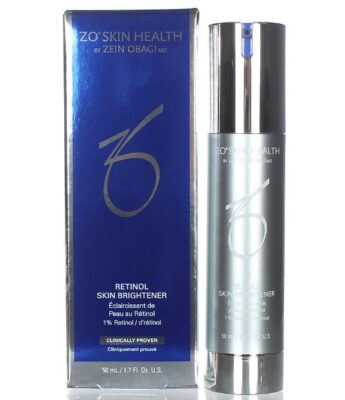Rhinoplasty is a surgical procedure for the nose that can be performed for cosmetic or medical reasons. It involves reshaping the nose to make it more delicate, attractive, functional, symmetrical, and proportional to the face. The shape of our noses can be a real game changer when it comes to gaining confidence. Furthermore, deformities such as a deviated septum can also affect normal breathing. Every year over two hundred thousand people undergo rhinoplasty in the US.
If you have finally gotten your rhinoplasty procedure done, it is important to remember that the recovery process takes some time. It usually takes about one to two weeks to recover fully. Post-procedure, you might have bruising and swelling on your nose and under the eyes that will take some time to resolve. The splint is removed after one week from your nose. While it is significant not to rush things after the procedure, we have a list of 11 tips you can follow to recover faster and go out and flaunt your new nose:
1. Always Follow The Doctor’s Advice:
Your surgeon will provide you with a specific personalized recovery plan. It will contain instructions to make your recovery quick and easy. You will be advised on the schedule of your medications and post-operative care plan to minimize infections, injury, or pain. It will also contain information on follow-up visits and examinations.
Make sure that all these instructions are followed properly to gain optimal results. Failure to work on the plan may prolong the recovery process and increase the risk of complications.
Tip: if you’re still looking for consultation regarding Rhinoplasty, then you can visit here https://www.eosrejuvenation.com/ and look at how this procedure is performed or get answers to any questions you might have.
2. Listen To Your Own Body:
Post-procedure recovery will follow its course but listening to your body is essential. Your doctor could only see the external effects of your rhinoplasty and healing progress. They may not be able to recognize any internal problems right away. If you feel any pain, swelling, or breathing difficulties, discuss it with your doctor immediately.
3. Elevate Your Head:
It is not advised to lie flat on the bed, sleep on one side or bend over after rhinoplasty. It will increase bruising and swelling, prolonging the recovery time. Increased pressure may also affect the procedure and displace the nose. To prevent any such complications, make sure to keep your head 30 degrees elevated at all times. Use two to three pillows while sleeping. A reclining chair will also help keep your head propped. An elevated position is usually required for up to six weeks after surgery.
4. Don’t Blow Your Nose:
Post-rhinoplasty, your nose may feel clogged, and you might experience some congestion. The congestion may last for days to weeks. It’s usually caused by swollen tissue and bleeding at the surgery site. However, it would be best if you resisted the urge to sneeze or blow your nose. It will disturb the healing process, aggravate bleeding, and dislodge the splint. It may also cause the delicate capillaries to rupture. Hence, please do not rub your nose when you sneeze and only wipe and lightly dab your nose in case of drainage.
5. Use Cold Compresses To Reduce Swelling:
As mentioned earlier, you may experience bruising and swelling around your nose in the first few hours after your surgery. Apply cold compresses or a cooling pad to the area to reduce swelling. It will help constrict the blood vessels. Be careful not to apply it directly onto the nose. Use it for twenty minutes daily for the first 3 days. It will noticeably reduce swelling and puffiness and accelerate the healing process.
6. Get Ample Rest:
Rest is another essential component on the road to recovery after rhinoplasty. During surgery, your body undergoes a stress response. Avoid any strenuous activity or sports to give your body some time to heal. Take a break from work and reduce social activities and parties for up to one-week post-surgery.
7. Eat Healthy And Nutritious Food:
Healthy and best foods provide the minerals and vitamins required by the body during the healing and recovery process. Make sure to eat a healthy balanced diet. Eat your vegetables and meat. Drink plenty of water as it will help remove toxins from your body. A diet consisting of fruits, vegetables, fish, and eggs will help rebuild the damaged tissue and collagen.
8. Avoid Vigorous Exercise:
If you exercise regularly and have a dedicated workout schedule, you might feel annoyed at being unable to resume your workout. But vigorous exercise like strength training, lifting weights, bending, or running might increase the swelling during this time. This can increase the recovery duration and can exacerbate complications. Wait for your doctor’s advice before getting back to your workout routine.
9. Reduce Salt Intake:
Foods with excessive salt cause water retention in the body. This can further increase swelling and bruising. It also increases blood pressure, which can induce bleeding. It’s best to avoid salty foods for the first two weeks after surgery. Keep a low-sodium diet to minimize swelling.
10. Avoid Wearing Glasses:
Wearing sunglasses or prescription glasses can exert more pressure on your nose after rhinoplasty. They can cause an indentation or might displace or dislodge the nose. Additionally, it can increase swelling and bruising. Use contact lenses during the recovery phase. Wear light frames if you cannot wear lenses, and only if it is necessary. Your surgeon will instruct you when to start wearing glasses again.
11. Don’t Miss Follow-Up Appointments:
The follow-up appointments scheduled after the procedure are essential. They minimize the risk of any hidden complications and are important to ensure your recovery. Your bandages and splint will be removed during these visits. Swelling and bruising would be monitored. Any issue or concern you might face will be addressed during these visits. So make sure none of these appointments are missed.
Conclusion:
A rhinoplasty can be a life-changing procedure. Make sure an expert in the field performs your procedure. Once your surgery is successful, all you need to do is follow your surgeon’s instructions and these tips above. After that, flaunt your new nose with increased confidence!










